
|
Astronomy Picture Of the Day (APOD)
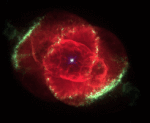 The Cat's Eye Nebula
The Cat's Eye Nebula
28.06.1995
Three thousand light years away, a dying star throws off shells of glowing gas. This Hubble Space Telescope image reveals "The Cat's Eye Nebula" to be one of the most complex "planetary nebulae" known.
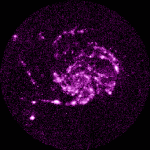 An Ultraviolet Image of M101
An Ultraviolet Image of M101
27.06.1995
This giant spiral galaxy, Messier 101 (M101), was photographed by the Ultraviolet Imaging Telescope onboard the Space Shuttle Endeavour during the Astro-2 mission (March 2 - 18, 1995). The image has been computer processed so that the colors represent the intensity of ultraviolet light.
 Spiral Galaxy M100
Spiral Galaxy M100
26.06.1995
The M100 galaxy is a large spiral galaxy similar to our own Milky Way, containing over 100 billion stars. It is over 150 million light years away, so the light we see left when dinosaurs roamed the Earth.
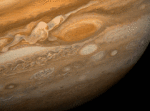 Jupiter from Voyager
Jupiter from Voyager
25.06.1995
Imagine a hurricane that lasted for 300 years! This picture of the planet Jupiter was taken by the Voyager 1 spacecraft as it passed the planet in 1979. Jupiter, a gas giant planet with no solid surface, is the largest planet in the solar system and is made mostly of the hydrogen and helium.
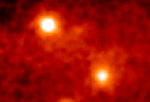 Gamma Ray Crab, Geminga
Gamma Ray Crab, Geminga
24.06.1995
What if you could "see" in gamma-rays? If you could, these two spinning neutron stars or pulsars would be among the brightest objects in the sky. This computer processed image shows the Crab Nebula pulsar (below and right of center) and the Geminga pulsar (above and left of center) in the "light" of gamma-rays.
 Gamma Ray Sky Map
Gamma Ray Sky Map
23.06.1995
What if you could "see" gamma rays? This computer processed image represents a map of the entire sky at photon energies above 100 million electron Volts. These gamma-ray photons are more than 40 million times more energetic than visible light photons and are blocked from the Earth's surface by the atmosphere.
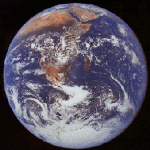 Earth from Apollo 17
Earth from Apollo 17
22.06.1995
In 1972 Astronauts on the United States's last lunar mission, Apollo 17, took this picture looking back at the Earth on their way to the moon. The continents of Antarctica and Africa are visible below the delicate wisps of white clouds. For more information see NASA NSSDC press release.
 Supernova 1987a Aftermath
Supernova 1987a Aftermath
21.06.1995
In 1987 a star in one of the Milky Way's satellite galaxies exploded. In 1994 the Hubble Space Telescope, in orbit around the earth, took a very detailed picture of the remnants of this explosion. This picture, above, showed unusual and unexpected rings, and astronomers are not sure how they formed.
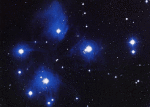 Pleiades Star Cluster
Pleiades Star Cluster
20.06.1995
The Pleiades star cluster, M45, is one of the brightest star clusters visible in the northern hemisphere. It consists of many bright, hot stars that were all formed at the same time within a large cloud of interstellar dust and gas.
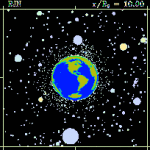 Neutron Star Earth
Neutron Star Earth
16.06.1995
If the Earth could somehow be transformed to the ultra-high density of a neutron star , it might appear as it does in the above computer generated figure. Due to the very strong gravitational field, the neutron star distorts light from the background sky greatly. If you look closely, two
|
January February March April May June July August September October November |
|||||||||||||||||||||||||||||||||||||||||||||||||